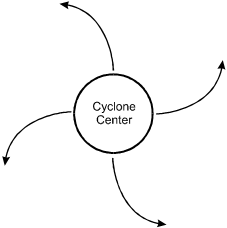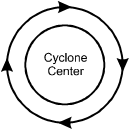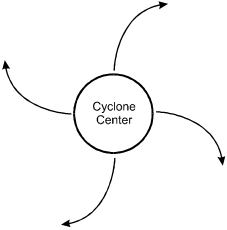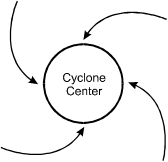Recommendation for individuals using a screenreader: please set your punctuation settings to "most."
Descriptive Statements:
- Recognize the characteristics of the different layers and components of the atmosphere, and the role of gases and particulates in regulating conditions on Earth.
- Analyze global wind patterns in relation to the Coriolis effect and the differential heating of Earth's surface by the sun.
- Demonstrate knowledge of the causes and effects of changes to the atmosphere due to human or natural activities.
Sample Item:
In the year following the major eruption of the Mount Pinatubo volcano in the Philippines,
a drop in mean global temperature was recorded. Which of the following factors was primarily
responsible for this drop in global temperature?
- emission of sulfuric gases from the volcano into the lower stratosphere
- above-average precipitation in tropical regions
- ejection of particulates into the lower troposphere by the volcano
- increased levels of smog-forming nitrogen oxides in the troposphere
Correct Response and Explanation (Show Correct ResponseHide Correct Response)
A. This question requires the examinee to demonstrate knowledge of the
effects of major volcanic eruptions on the climate system. The 1991 eruption of Mount
Pinatubo in the Philippines provided an opportunity for scientists to evaluate the effects
of a major eruption on climate. The eruption introduced over 25 million tons of sulfur
dioxide into the stratosphere. The oxidation of the sulfur dioxide emitted by the volcano
produced a haze of sulfuric acid droplets that spread throughout the stratosphere,
significantly reducing the amount of sunlight reaching Earth's surface. This had the
effect of lowering the average temperature of the troposphere by approximately 0.5°C 0.5 degrees Celsius
following the eruption, while increasing the temperature of the stratosphere.
Descriptive Statements:
- Demonstrate knowledge of the characteristics of high- and low-pressure systems, air masses, and fronts and the conditions under which these weather phenomena typically form.
- Analyze the conditions that produce different types of clouds, precipitation, and weather, including the effects of the subtropical and polar front jet streams.
- Analyze the effects of geography and/or bodies of water on weather formation, including severe weather.
- Apply knowledge of weather maps and symbols and the instruments used to measure and predict weather conditions.
Sample Item:
A tropical cyclone in the Gulf of Mexico is moving slowly toward Florida. The flow of
prevailing surface winds associated with the cyclone most closely resembles which of the
following diagrams?




Correct Response and Explanation (Show Correct ResponseHide Correct Response)
D. This question requires the examinee to demonstrate knowledge of the
wind patterns associated with low-pressure systems in the northern hemisphere. A tropical
cyclone is a large low-pressure system that rotates counterclockwise in the northern
hemisphere due to the Coriolis effect, producing converging surface winds that pull in air
from the surrounding region.
Descriptive Statements:
- Demonstrate knowledge of the biotic and abiotic characteristics of Earth's major climate regions.
- Analyze the geographic factors and conditions responsible for unique climate phenomena, such as monsoons and the El Niño/Southern Oscillation (ENSO).
- Demonstrate knowledge of the causes and effects of current and past changes in global climate, including the interrelationships of ecosystems, the hydrologic cycle, and human society.
Sample Item:
The once extensive grassland prairies of the upper Midwest typically did not include
forests. Which of the following factors was primarily responsible for the absence of
forests in this region?
- low annual precipitation
- winter and summer temperature extremes
- thin topsoil
- summer fires and strong winter winds
Correct Response and Explanation (Show Correct ResponseHide Correct Response)
A. This question requires the examinee to demonstrate knowledge of the
limited rainfall that characterizes grasslands in general and the once extensive grassland
prairies of the upper Midwest in particular. Although temperate grasslands have a fire
ecology, grasses dominate in these regions primarily because the annual average rainfall
is inadequate to sustain a forest ecosystem.

